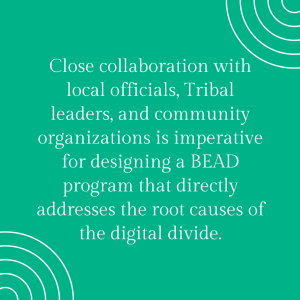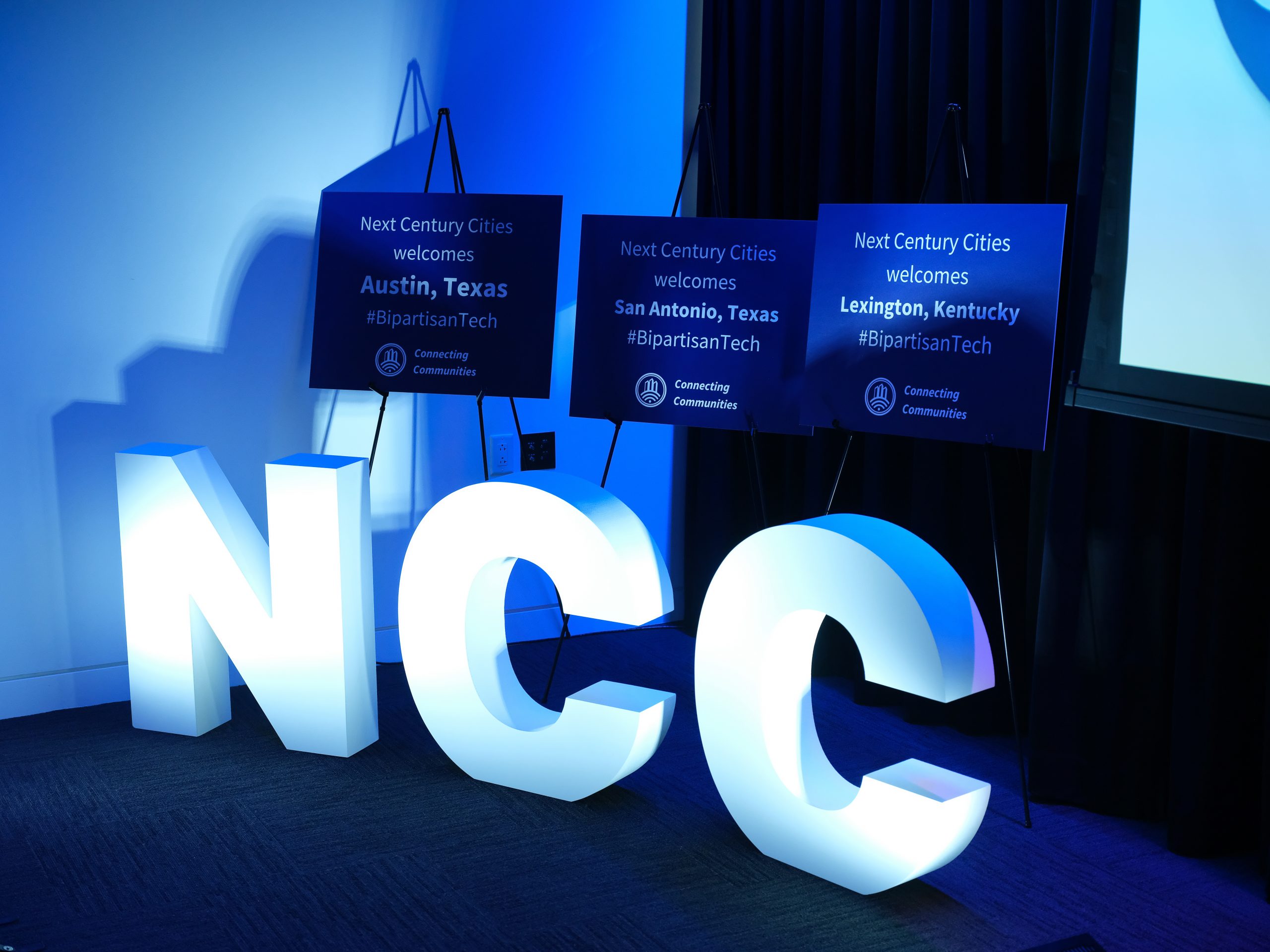
On May 8, 2023, Next Century Cities filed reply comments with the California Public Utilities Commission (CPUC) highlighting community-based policy goals for the state’s Broadband Equity, Access, and Deployment (BEAD) program. Importantly, California is considering how to structure its challenge process and prioritize which projects most need funding. While the National Telecommunications and Information Administration (NTIA) gives states discretion to design the plans that work best for their communities, the agency encourages collaboration between state BEAD and Digital Equity (DE) programs.
The Federal Communications Commission’s broadband maps, which provide a baseline for the BEAD program, focus on where providers advertise service. Addressing broadband availability and adoption in tandem will require states to go beyond broadband deployment data.
Preparing for BEAD and DE programs is an ideal time for states to incorporate newly available data into state maps. For example, experts from across the country collaborated with the Benton Institute to design an Affordable Connectivity Program performance tool, which helps measure the difference between actual and expected program enrollment for state Digital Equity Programs.
States like California also need to work directly with community leaders and local officials to paint an accurate picture of the broadband landscape and design effective plans to ensure that all US residents have a reliable, high-quality home broadband connection. Read NCC’s Reply Comments here.
Additional Resources:
- California Needs Local Input to Develop a Robust Broadband Equity, Access, and Deployment Program
- Next Century Cities joined allies in filing State Challenge Process Comments with NTIA
- Next Century Cities Mapping Resources

